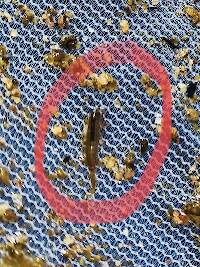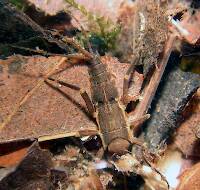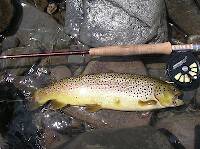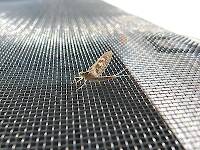
Salmonflies
Pteronarcys californica
The giant Salmonflies of the Western mountains are legendary for their proclivity to elicit consistent dry-fly action and ferocious strikes.
Featured on the forum

This one pretty clearly keys to Kogotus, but it also looks fairly different from specimens I caught in the same creek about a month later in the year. With only one species of the genus known in Washington, I'm not sure about the answer to this ID.

Troutnut is a project started in 2003 by salmonid ecologist Jason "Troutnut" Neuswanger to help anglers and
fly tyers unabashedly embrace the entomological side of the sport. Learn more about Troutnut or
support the project for an enhanced experience here.
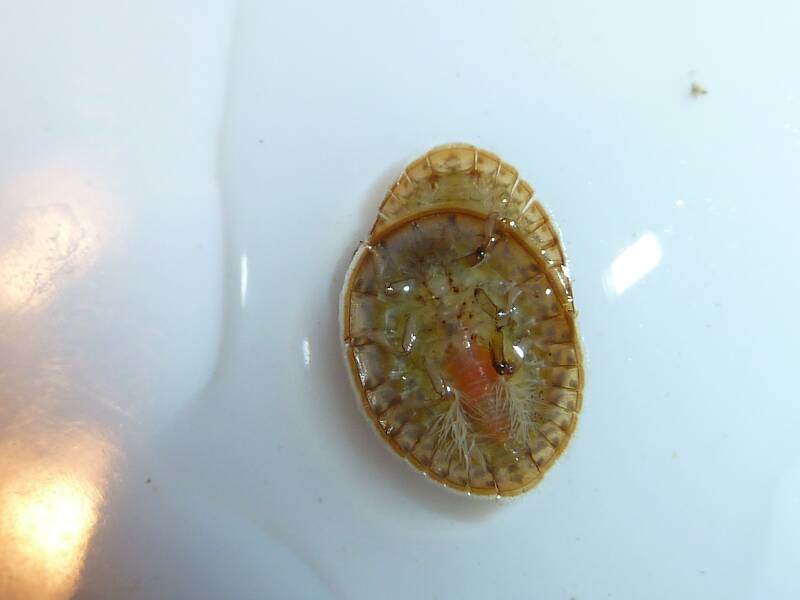
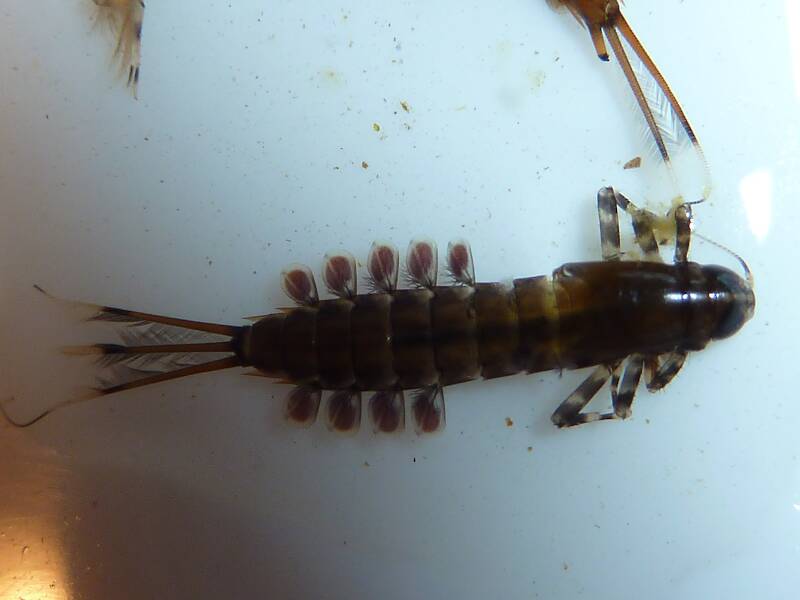
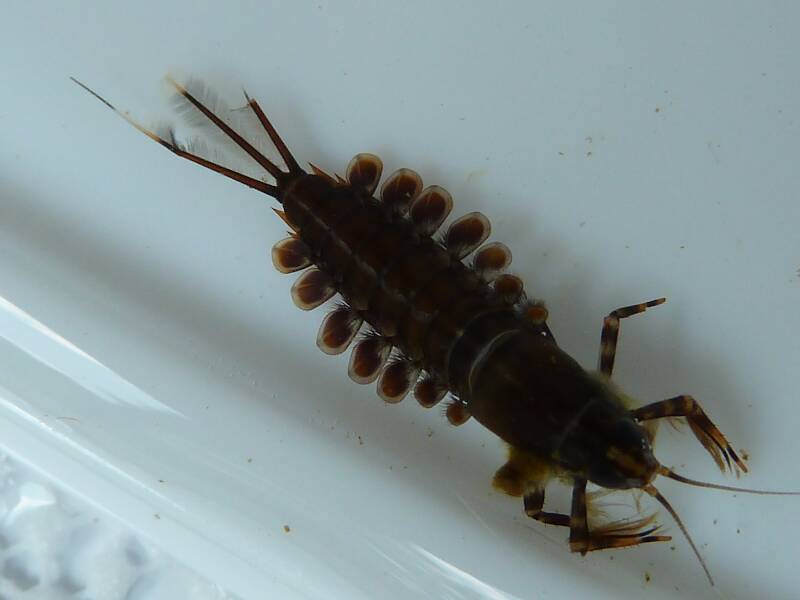
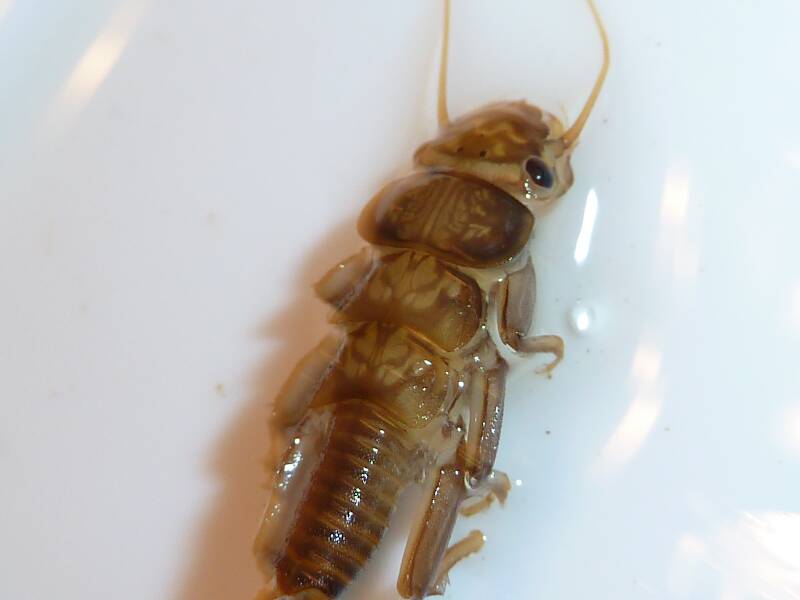
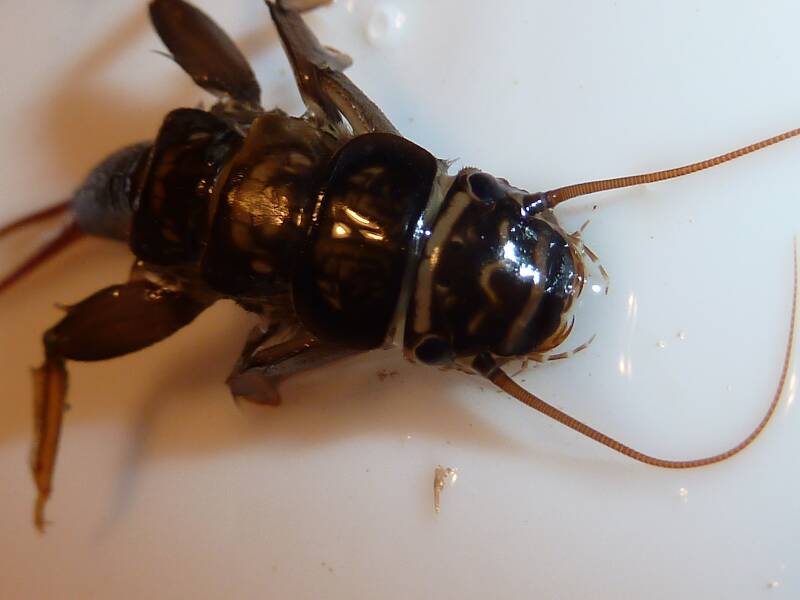
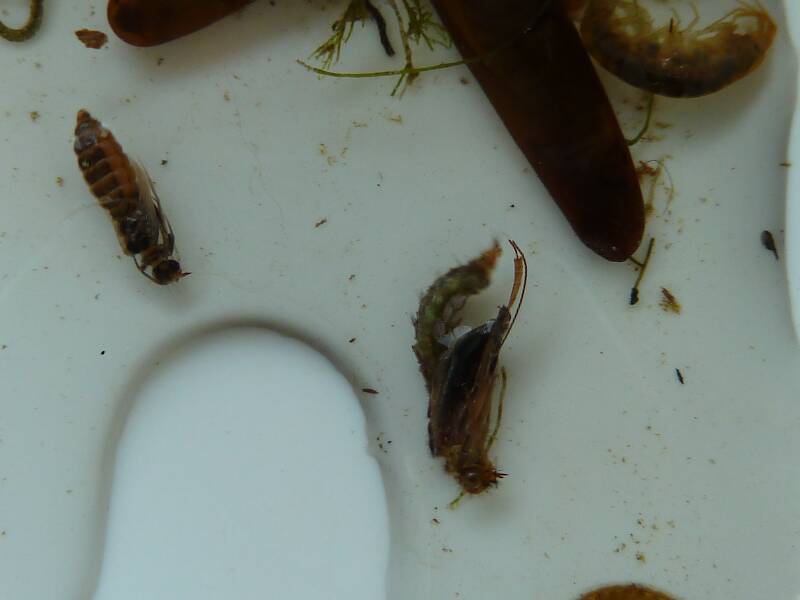
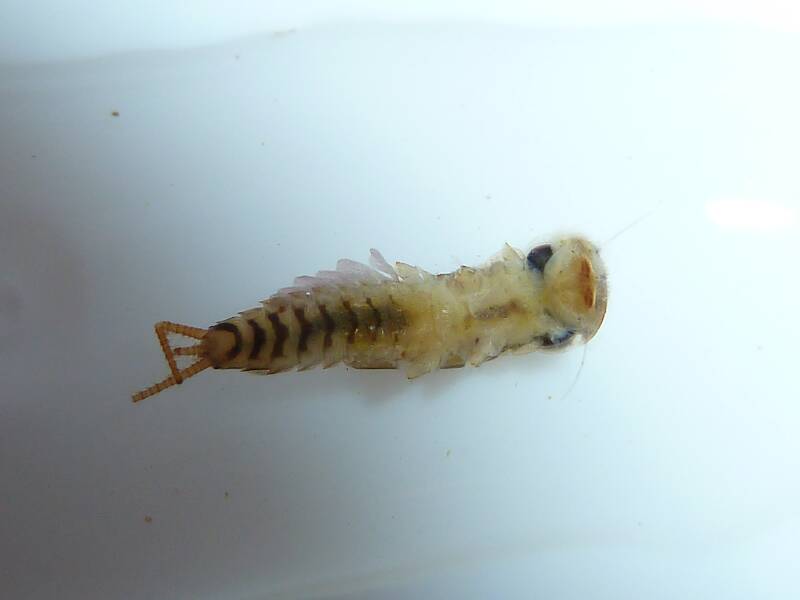
FISHN50 on Aug 25, 2011August 25th, 2011, 7:50 pm EDT
I want to thank all of you for I.D. ing the last 2 bugs. Like I said in the post I'm doing my first invertebrate study of a stream here in NJ that recently had a lot of stream work done on it. I want to get a count & an idea of it.s health & plan on continuing to do the sampling in different sections of the river in the next few yrs.
I can tell a mayfly from a caddis or stonefly but run into problems going any further on the I.D. I picked up a camera & it takes some pretty good macro photos so I intend on photoing most of the collected bugs. I also got a cheap digital microscope on E-Bay & will be using that as I get going.
This site is amazing & I want to thank you Jason for all the work you put into it. I look at it as a valuable resource & with your help & the rest of you fine fellow's help I'll be able to get most of the bugs I.D.
I have some more photos to post & would appreciate your further help.
If this is too much to ask just ignore my posts & I'll get the message
Thanks
Neil
I can tell a mayfly from a caddis or stonefly but run into problems going any further on the I.D. I picked up a camera & it takes some pretty good macro photos so I intend on photoing most of the collected bugs. I also got a cheap digital microscope on E-Bay & will be using that as I get going.
This site is amazing & I want to thank you Jason for all the work you put into it. I look at it as a valuable resource & with your help & the rest of you fine fellow's help I'll be able to get most of the bugs I.D.
I have some more photos to post & would appreciate your further help.
If this is too much to ask just ignore my posts & I'll get the message
Thanks
Neil
Taxon on Aug 25, 2011August 25th, 2011, 10:00 pm EDT
Neil-
Ignore you? Never!
1) Waterpenny beetle larva
2) Isonychia mayfly nymph
3) Isonychia mayfly nymph
4) Acroneuria stonefly nymph
5) Acroneuria stonefly nymph
6) Unknown caddisfly pupae
Ignore you? Never!
1) Waterpenny beetle larva
2) Isonychia mayfly nymph
3) Isonychia mayfly nymph
4) Acroneuria stonefly nymph
5) Acroneuria stonefly nymph
6) Unknown caddisfly pupae
Entoman on Aug 26, 2011August 26th, 2011, 12:02 am EDT
Hi Neil -
The mayfly nymph photos are most likely Isonychia bicolor (Leadwing Coachman). Though there are other species, they are less common. They are all excellent swimmers.
The stoneflies belong to the Perlidae family and are probably Acroneuria abnormis (Common Brown Stonefly). The top one has molted recently, which explains the lighter color.
Any determination of the caddis pupa in the next photo would be pure speculation on my part (though I have my suspicions). Closeups of the frontal view head, dorsal abdominal, and anal processes would assist in determining the family, but to get to the genus level you will probably need to put the specimens in a covered container after shooting them to see if they will finish the emergence process. Then you can photo them as adults.
The last photo looks to be Maccaffertium mediopunctatum mediopunctatum, one of several Summer Cream Cahills (see edit). It was formerly classified as Stenonema nepotellum. By either name it is still one of the clinger nymphs of the family Heptageniidae.
Regards,
Kurt
BTW - That's a scud you have up in the corner of the caddis picture.
Edit: To correct the record, a recent conversation with someone I consider expert on photo identifying eastern mayfly hatches pointed out that the shape and number of posteriolateral projections (spines along the sides of the abdomen) precludes my suggestion and that this specimen is probably either M. modestum or M. ithaca. Between the two it's most likely the latter. Both are also Summer Cahills and pale as duns, so that part of the entry remains valid.
The mayfly nymph photos are most likely Isonychia bicolor (Leadwing Coachman). Though there are other species, they are less common. They are all excellent swimmers.
The stoneflies belong to the Perlidae family and are probably Acroneuria abnormis (Common Brown Stonefly). The top one has molted recently, which explains the lighter color.
Any determination of the caddis pupa in the next photo would be pure speculation on my part (though I have my suspicions). Closeups of the frontal view head, dorsal abdominal, and anal processes would assist in determining the family, but to get to the genus level you will probably need to put the specimens in a covered container after shooting them to see if they will finish the emergence process. Then you can photo them as adults.
The last photo looks to be Maccaffertium mediopunctatum mediopunctatum, one of several Summer Cream Cahills (see edit). It was formerly classified as Stenonema nepotellum. By either name it is still one of the clinger nymphs of the family Heptageniidae.
Regards,
Kurt
BTW - That's a scud you have up in the corner of the caddis picture.
Edit: To correct the record, a recent conversation with someone I consider expert on photo identifying eastern mayfly hatches pointed out that the shape and number of posteriolateral projections (spines along the sides of the abdomen) precludes my suggestion and that this specimen is probably either M. modestum or M. ithaca. Between the two it's most likely the latter. Both are also Summer Cahills and pale as duns, so that part of the entry remains valid.
"It's not that I find fishing so important, it's just that I find all other endeavors of Man equally unimportant... And not nearly as much fun!" Robert Traver, Anatomy of a Fisherman
FISHN50 on Aug 26, 2011August 26th, 2011, 11:49 am EDT
Thanks guys
Neil
Neil
Creno on Aug 26, 2011August 26th, 2011, 5:07 pm EDT
There are two caddis pupae in fig 6. The large one looks like a hydropsychid and the wing pads are black enough that is likely you can determine the species with a little work. You will need to carefully clear the abdomen (I use the KOH method) and then compare the private parts to figures in the literature.
The small one looks like a philopotamid. You should be able to determine genus just comparing it to the literature but maybe not species.
If ya want help just let me know.
creno
The small one looks like a philopotamid. You should be able to determine genus just comparing it to the literature but maybe not species.
If ya want help just let me know.
creno
Quick Reply
Related Discussions
Topic
Replies
Last Reply
1
Oct 28, 2008
by GONZO
by GONZO
5
Jun 14, 2008
by Wiflyfisher
by Wiflyfisher
1
May 11, 2007
by Troutnut
by Troutnut





